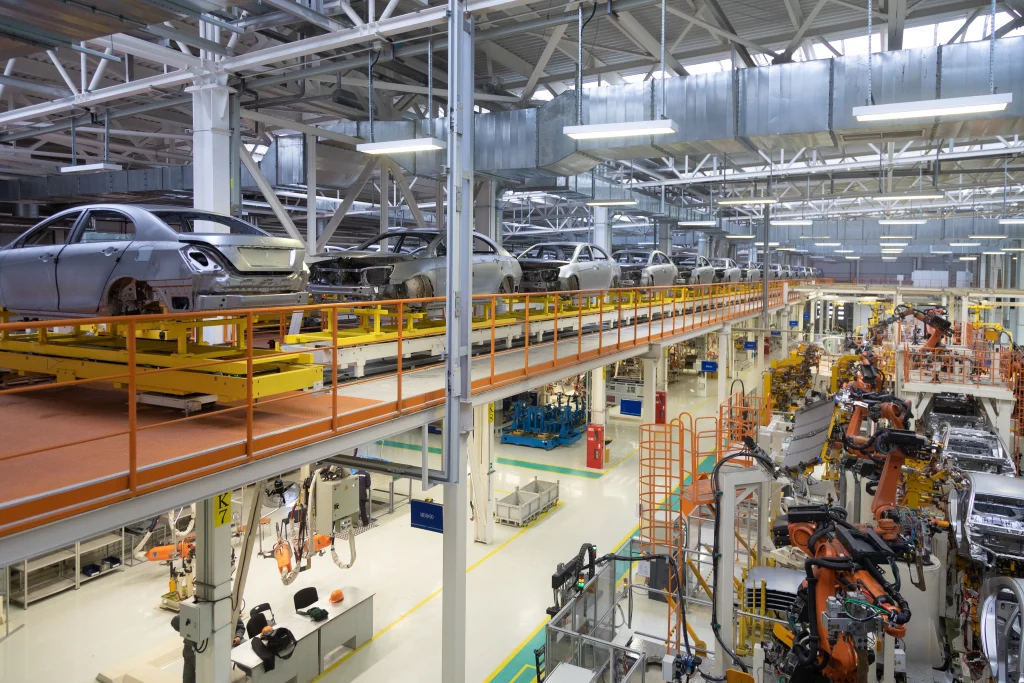During the last decade, the automotive industry has consolidated its position as one of the fundamental pillars of the Mexican economy. This statement was reflected in the most recent report of the National Institute of Statistics and Geography (INEGI), which revealed a24.1% increase in light vehicle sales in the last year, marking a marked contrast with the performance of 2021.1
The constant growth of the automotive industry has led to the adoption of a trend that has become increasingly relevant in this context: nearshoring. This industrial strategy, which involves outsourcing production and services to geographically nearby countries, has completely transformed the way companies operate in Mexico and has had a profound impact on the country’s economy.
Influence of nearshoring for the automotive industry
Below, we take a closer look at how nearshoring is transforming the industry.
The concept of nearshoring has become increasingly important in the automotive industry due to several factors.
- Competitive labor costs
Mexico offers lower labor costs compared to countries such as the United States and Canada, which allows automotive companies to produce components and assemble vehicles more economically.
- Proximity to consumer markets
Mexico’s geographic location near key consumer markets, such as the United States, is a strategic advantage that streamlines the distribution of vehicles and automotive parts.
- Employment generation
Nearshoring is driving the creation of more jobs as companies move their production to Mexico, creating job opportunities.
- Free Trade Agreements Network
Mexico has a network of free trade agreements, including the T-MEC (Treaty between Mexico, the United States and Canada), which facilitates trade and reduces trade barriers. A great advantage.
- Developed logistics infrastructure
The Mexican market has invested in modern logistics infrastructure, including ports, roads and railroads, which translates into ease of moving products from region to region.
The Tesla case in Mexico
At the beginning of this year, the nearshoring trend nearshoring in Mexico’s automotive sector became even more evident with the announcement of the construction of Tesla’s new plant in Nuevo Leon.
The impact of this trend is more noticeable when we learn that a Tesla car produced in China can take between 4 and 6 weeks to arrive in the United States, without taking into account unforeseen events; while production in Mexico significantly reduces these times, with transfer times of 2 to 4 days through Nuevo Laredo. 2
In monetary terms, the construction of this plant has boosted exports between Mexico and the United States by approximately US$15 billion. This increase represents 10% of total automotive-related exports. 3
Likewise, it should be noted that this plant, in addition to joining the production of vehicles in Mexico, joined other major automotive brands such as BMW, General Motors and Volkswagen, which already have a solid presence in the country. 4
In conclusion, in recent years, Mexico has emerged as one of the main nearshoring destinations in Latin America, attracting world-renowned investments, such as Tesla, in the automotive sector.
The country has significant competitive advantages related to its logistics and production infrastructure, which supports the operations of large companies seeking to relocate to Mexico. This provides the opportunity for investors to achieve industrial growth.
References
1 Corporate author. (2022). New light vehicle sales report by brand as of December 2022. AMIA. https://amia.com.mx/2023/02/07/reporte-de-venta-de-vehiculos-ligeros-nuevos-por-marca-a-diciembre-2022-2/
3 Corporate author. (2023). Automotive industry development: How does it impact Mexico? Thomson Reuters. https://www.thomsonreutersmexico.com/es-mx/soluciones-fiscales/blog-fiscal/desarrollo-de-la-industria-automotriz-como-impacta-a-mexico
Jacobo, Daniel. (2023). What is nearshoring: the case of Tesla and its arrival in Mexico. Factorial. https://factorial.mx/blog/nearshoring-tesla-mexico/
2 Porras, Eric. (2023). Nearshoring: Mexico’s (new) moment. Egade Ideas. https://egade.tec.mx/es/egade-ideas/opinion/nearshoring-el-nuevo-momento-de-mexico
4 Treviño Núñez, Fernando. (2023). Tesla arrives in Mexico, a great opportunity for progress and development. High level. https://www.altonivel.com.mx/opinion/tesla-llega-a-mexico-una-gran-oportunidad-de-progreso-y-desarrollo/
